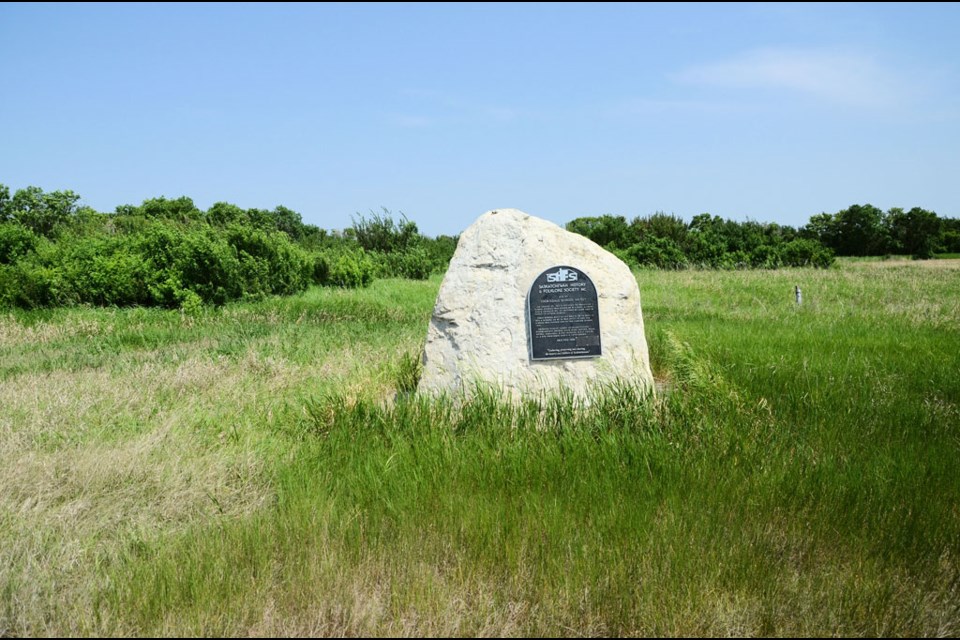LUSELAND — Luseland Museum hosted a country school tour led by Jean Halliday June 10. About a dozen seniors came out and rode a school bus once again, touring the grid roads of the RM of Progress No. 351 to see nine sites of former country schools.
Two school buildings are still standing in their original locations. The brick Abbnott School, built in the early 1920s, has been renovated into a home and a family is living in it. The West Luseland School, which closed in 1952, is today a place where Luseland School graduating students paint their names.
Halliday said the many one-room schools that once existed in rural Saskatchewan were established to achieve the provincial government’s goal of ensuring no child had to walk more than two or three miles to school. Two sections were set aside in each township for schools.
Some school sites – such as Warrington and Thorndale – are marked by memorial cairns and plaques. Others can be recognized because of the crowd of caraganas still growing in a corner of a field.
The Niagara School building, in use as a school from 1923 to 1952, was later moved to become the Bell Acres Golf and Country Club clubhouse. There is nothing to mark where it once was – not even caraganas. One would have to have the legal land description, be familiar with the area and specifically look for the site in order to locate the place which once hosted a schoolhouse, a barn, swings, a teeter-totter and a basketball court.
Luseland Museum board member Brent Honeker said they would like to see at least a sign at every former school site but it is a costly process with metal signs costing $500 each.
Among the sites visited, Warrington was the first school to be built, in 1909. The Baliol School was the last of the country schools to close, operating from 1912 to 1960.
As each school site was visited, Halliday provided information about the history of the school. She also drew attention to other places of interest along the way, including Shallow Lake, the last known nesting place of whooping cranes in Saskatchewan; Heart’s Hill, the second highest point in Saskatchewan; and the St. Francis Cemetery.
Some of the passengers were able to provide additional information about some of the schools, with one gentleman pointing out where there used to be a maypole at Thorndale School. A depression in the grass could still be seen where the children would have danced around the maypole.
Usually on a school bus, the oldest person is the bus driver. In this case, the 53-year-old driver was the youngest.




